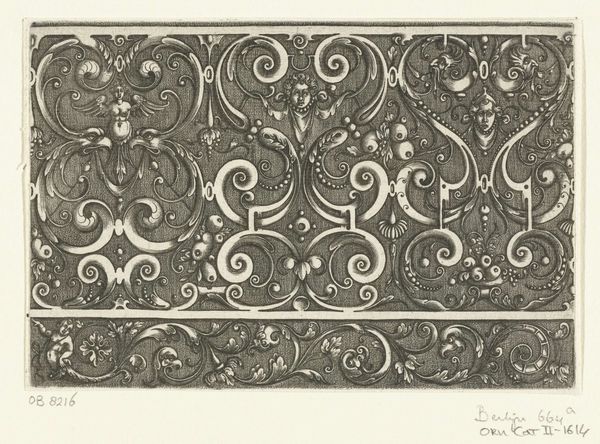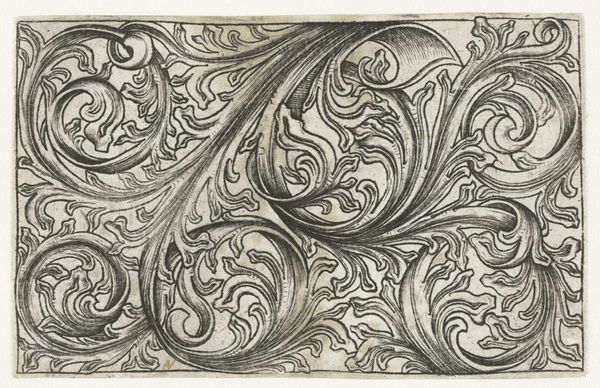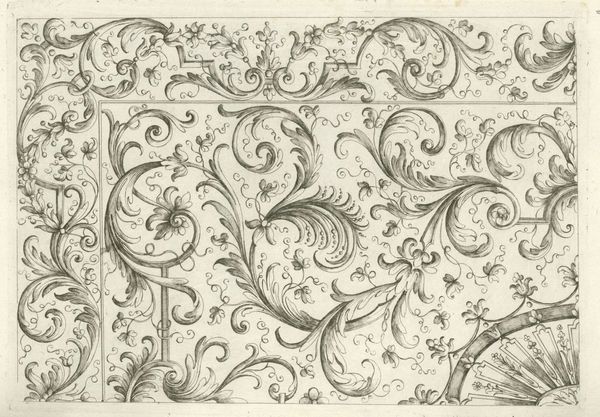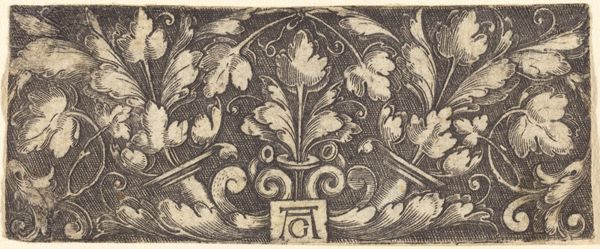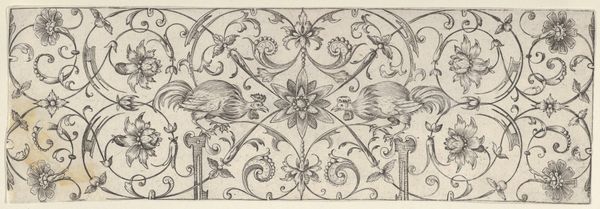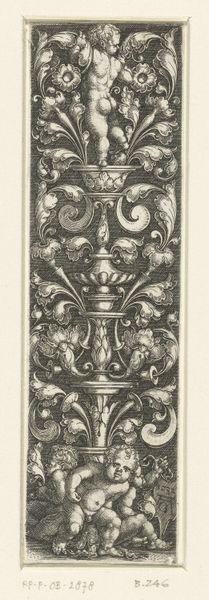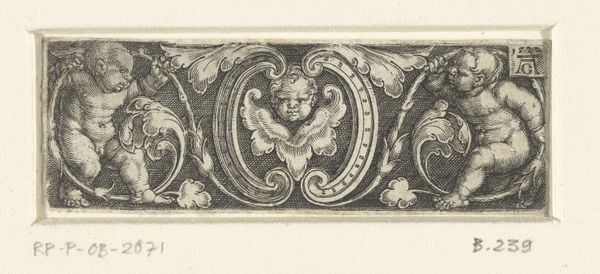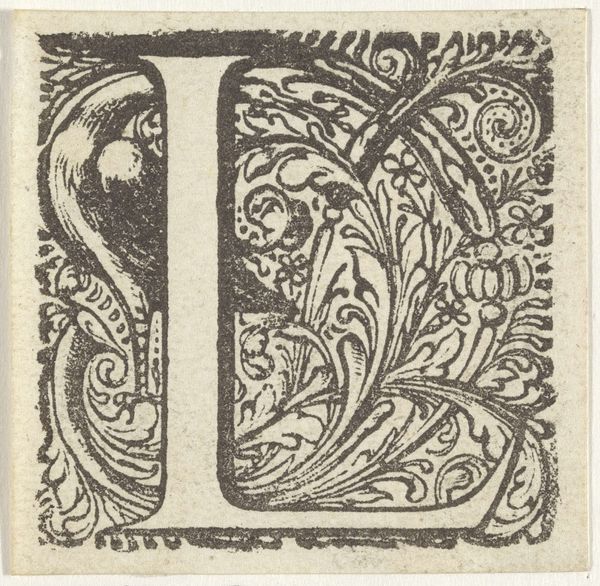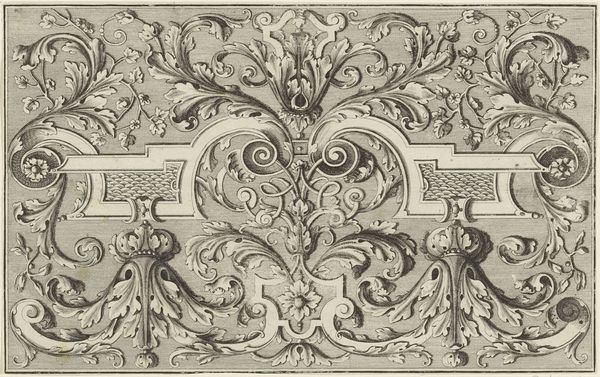
engraving
#
pen drawing
#
line
#
northern-renaissance
#
decorative-art
#
engraving
Dimensions: height 25 mm, width 121 mm
Copyright: Rijks Museum: Open Domain
Editor: Here we have an anonymous engraving, probably a pen drawing from around 1500 to 1600, called "Fries met zowel links als rechts een dubbele voluut van bladranken," or "Frieze with double volutes of foliage tendrils on both left and right". It has a really interesting, almost repetitive quality. What are your thoughts when you see this kind of work? Curator: The immediate question for me is where this object would have been materially situated, and who would have owned it. The decorative nature speaks to consumption and display. Consider the labour involved in such detailed engraving during the Renaissance. This isn't just art; it's a commodity. Editor: A commodity? I hadn’t really considered that. The 'decorative' tag made me think of ornamentation of books or furniture... How does the engraving process factor in? Curator: Engraving was a highly skilled craft. The materials—metal plates, inks, and paper—were all subject to economic forces. Each print represents a transfer of artistic labor into a distributable, tradable object. Did this frieze serve an individual patron, or were these engravings available to wider markets to decorate different goods? What status did it imply to have your objects ornamented this way? Editor: So, understanding its original social context changes how we see the aesthetic value? Curator: Precisely. We tend to isolate art within galleries. But art is always embedded within broader systems of making and exchange. By focusing on process and material, we resist separating "high art" from "craft," recognizing them both as products of labour. Who profits from it, what materials make it, and how it is circulated is, to me, how meaning is created. Editor: That's fascinating, I see it as more than just decoration now. Thanks! Curator: And I understand the engraving’s decorative features not as mere aesthetic embellishment, but as material signs of social relations and productive forces!
Comments
No comments
Be the first to comment and join the conversation on the ultimate creative platform.

